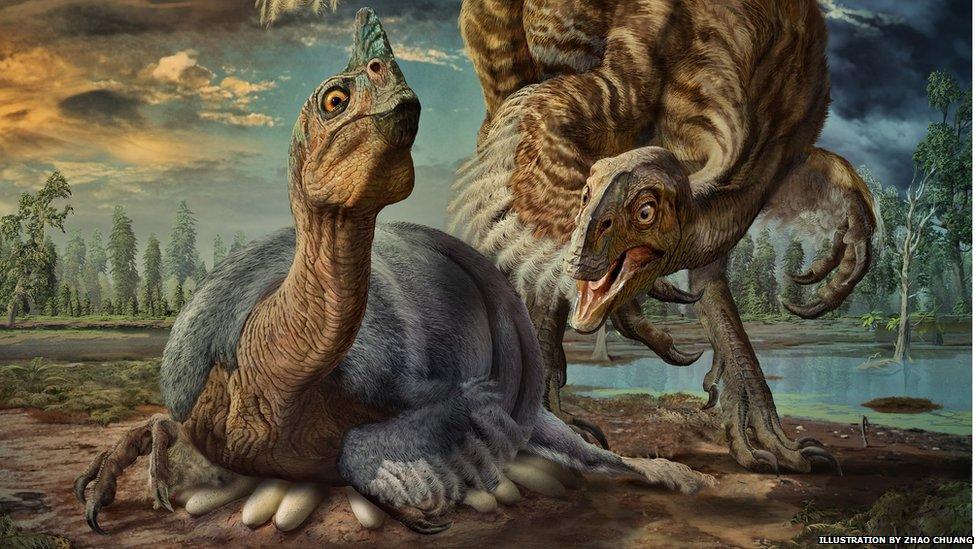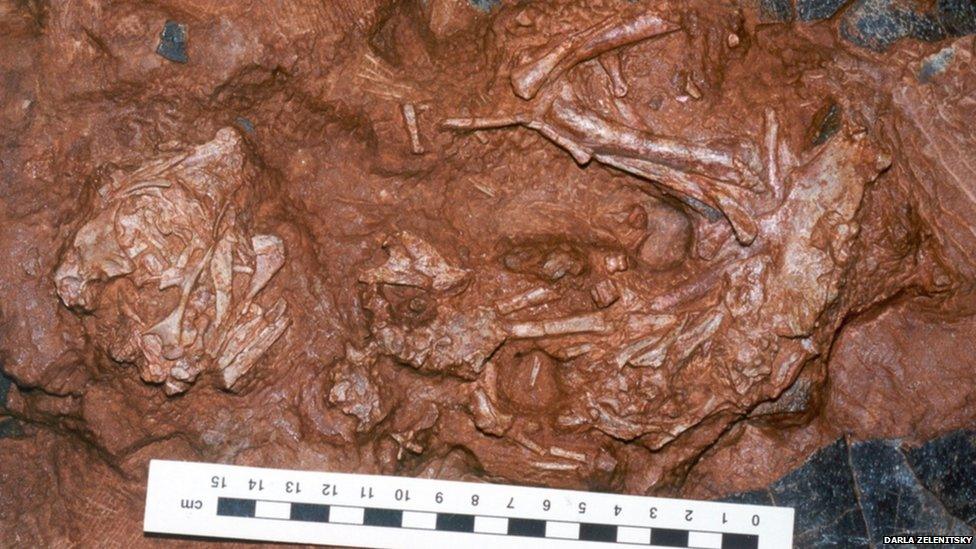Identity of famous baby dinosaur fossil revealed
- Published

Reconstruction of the dinosaur incubating its eggs
The fossil of a baby dinosaur discovered in China more than 25 years ago has formally been identified as a new species of feathered dinosaur.
The hatchling, dubbed Baby Louie, was found within a nest of dinosaur eggs.
Palaeontologists have called it Beibeilong sinensis, which translates to "Chinese baby dragon".
They say it is the first known specimen of a gigantic bird-like dinosaur belonging to the group known as oviraptorosaurs.
Although the fossil of the infant dinosaur is small, it would have grown into an adult weighing more than 1,000kg.
The discovery of dinosaur eggs in China, South Korea, Mongolia and North America suggests Beibeilong may have been common around 100 million years ago, say the researchers.
''The geographical distribution and abundant occurrences of Macroelongatoolithus egg remains reveal that giant oviraptosaurs were relatively widespread and perhaps even common in the early part of the Late Cretaceous, even though their skeletal remains are scarce and have yet to be identified in many regions,'' they write in Nature Communications, external.
In the late 1980s and early 1990s, thousands of dinosaur eggs were collected from rocks of Henan, China, by local farmers.
Some were illegally exported, including the specimen, which ended up in the US.
The skeleton of the infant dinosaur caused a stir and was known as "Baby Louie" after the man who photographed it for the cover of a magazine.
The fossil was returned to China in 2013, where it has now been formally identified.
Scientists in China and Canada compared the fossil to previously described dinosaur species and determined that it is a new species.

The hatchling skeleton measures 38cm from nose to tail
Commenting on the research, Dr Steve Brusatte of the University of Edinburgh said the eggs give us a glimpse of how some of the biggest, weirdest dinosaurs reproduced.
''It stretches the mind to imagine these wee little embryos growing into a one-ton feather-covered dinosaur that would have looked quite a bit like Big Bird,'' he said.
''And they were weird - with feathers and beaks, but no teeth.''
The baby dinosaur is only about the size of a guinea pig.
However, a previous study estimated that dinosaurs from such eggs could grow into gigantic adults weighing more than 1,000kg.
The eggs found alongside the fossil are of the largest known type of dinosaur egg.
These are common in the fossil record, suggesting that large oviraptorosaurs had a large range during Cretaceous times.
Follow Helen on Twitter, external.